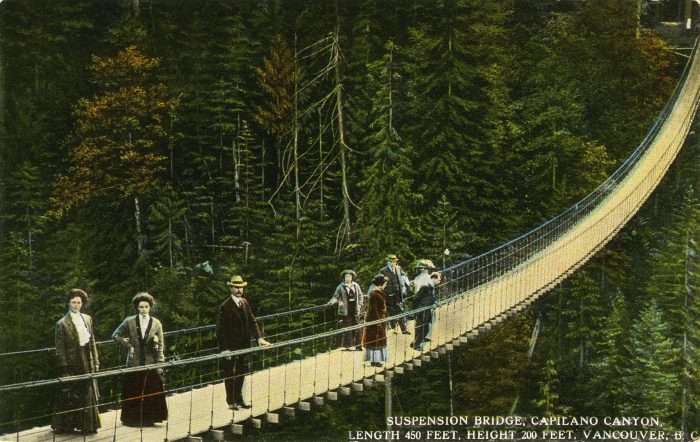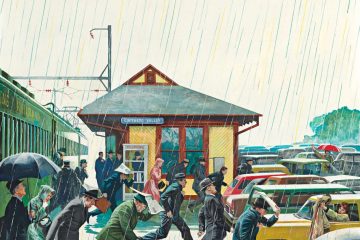A Match Made In Free Fall
Q.
Why do people do scary things on early dates?
.
A.
In ‘romantic,’ ‘reality’ shows – no judgment! Streaming history… – daters will be challenged with hair-raising adventures. Rappel down this skyscraper. Or free-fall. Leap off this scenic cliff. Take your fear of heights and climb up the cables of this 160 metre bridge. Not scary enough? Then, we’ll bind you together and heave you and your bungee cords off this precipice towards the violently rushing, spleen-splicing river.
If they survive these feats of derring-do with their limbs and teeth intact, much inter-date hugging and kissing ensues. We are the best! You are the best!
None of this adrenaline bonding would surprise psychologists Don Dutton and Arthur Aron. In their classic 1974 research at UBC, Dutton and Aron required male subjects to walk across the then precarious Capilano Suspension Bridge. The bridge creaked and swung. Little holes in the wooden planks reinforced the view off the side. Lurch the wrong way and you could be plummeting to your death.
.
Philip T. Timms. ~ 1906. City of Vancouver Archives
.
After making it safely across, the male subjects were understandably bubbling with adrenaline – heart pumping, palms sweating. They were greeted on the other side by an attractive study accomplice who offered them her phone number, in case they wanted to talk further about what they had experienced.
Those who had crossed the bouncing death bridge were far more likely to take her number and call her than those male subjects who had traversed a lower, sturdier bridge nearby. When asked to write a story, the men on the hole-filled, swinging high bridge were far more likely to use sexual imagery than those on the uneventful bridge.
As it turned out, Dutton and Aron discovered, the men on the scary bridge had misattributed their arousal. The fear-rooted adrenaline that had been stimulated by the bridge was re-interpreted as sexual attraction. ‘I feel so alive. I must really like this woman.’
.
.
In a 2014 study by Dr’s Lea Dunn and Joandrea Hoegg in the Journal of Consumer Research – we learn that people can similarly displace their fear-aroused emotions on consumer brands.
In this particular study, subjects watched film clips from The Ring and Salem’s Lot. These were excerpts that had been validated as scary in previous research.
You start to play it… and it’s like somebody’s nightmare. Then suddenly, this woman comes on. Smiling at you, right? Seeing you… through the screen. Then when it’s over, your phone rings. Someone knows you watched it. And what they say is, “You will die in seven days.’
Before the frightening clips began, the experimenters placed a new, unknown brand of sparkling water on the desk in front of the subjects. Those who watched The Ring and Salem’s Lot felt far more emotionally attached to the new water brand than those who had watched exciting, sad or happy film clips.
Here, again, emotionally aroused subjects were open to a contextual release for their intense feelings and the sparkling water obliged. This fear-inspired water-attachment occurred even when they shared the room – and the horror experience – with the sparkling water, but weren’t allowed to touch it.
All I ever wanted was you…
.
Header: Dominik Dancs
Photo #2: Stefano Pollio










